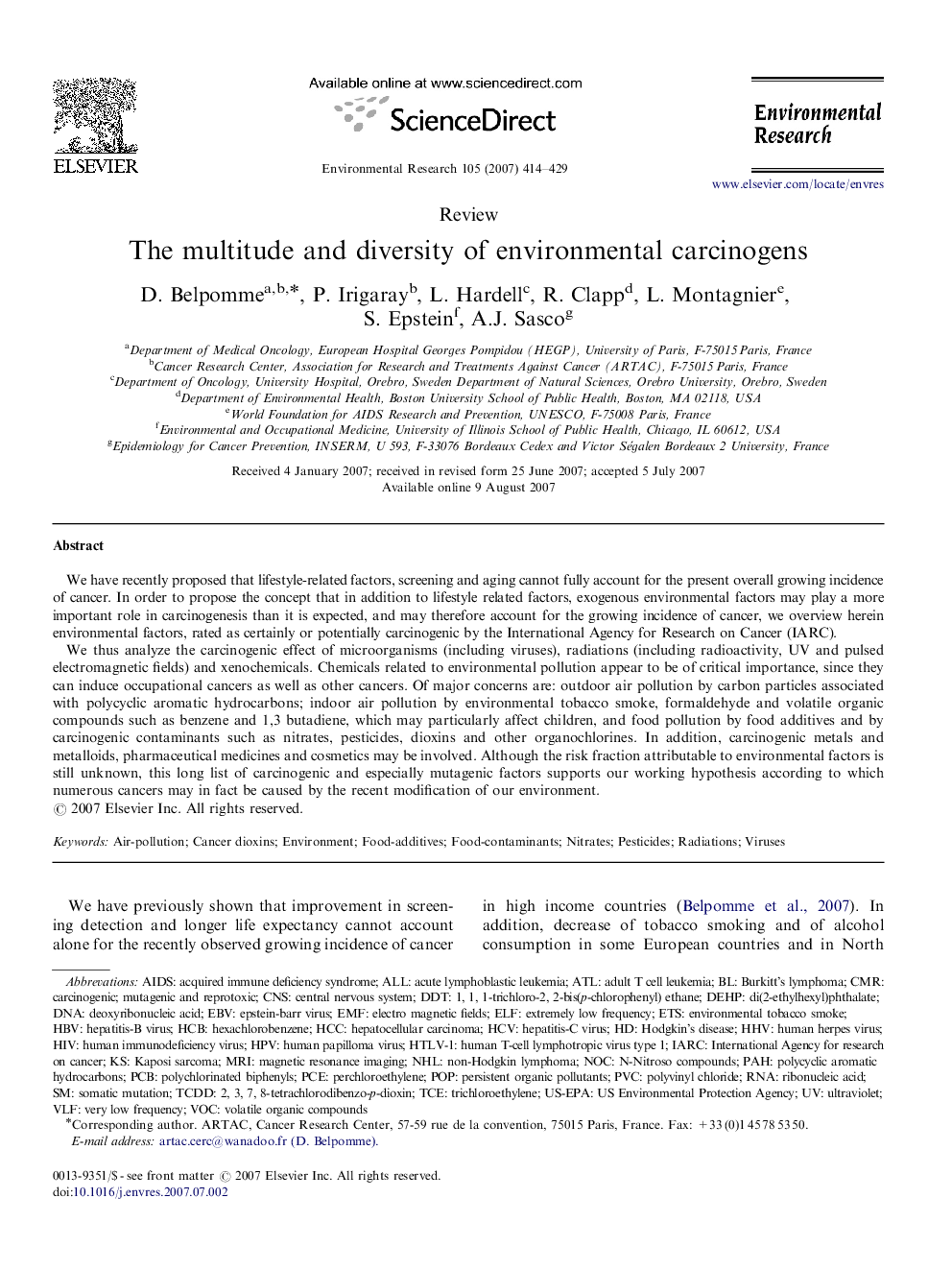| Article ID | Journal | Published Year | Pages | File Type |
|---|---|---|---|---|
| 4470339 | Environmental Research | 2007 | 16 Pages |
We have recently proposed that lifestyle-related factors, screening and aging cannot fully account for the present overall growing incidence of cancer. In order to propose the concept that in addition to lifestyle related factors, exogenous environmental factors may play a more important role in carcinogenesis than it is expected, and may therefore account for the growing incidence of cancer, we overview herein environmental factors, rated as certainly or potentially carcinogenic by the International Agency for Research on Cancer (IARC).We thus analyze the carcinogenic effect of microorganisms (including viruses), radiations (including radioactivity, UV and pulsed electromagnetic fields) and xenochemicals. Chemicals related to environmental pollution appear to be of critical importance, since they can induce occupational cancers as well as other cancers. Of major concerns are: outdoor air pollution by carbon particles associated with polycyclic aromatic hydrocarbons; indoor air pollution by environmental tobacco smoke, formaldehyde and volatile organic compounds such as benzene and 1,3 butadiene, which may particularly affect children, and food pollution by food additives and by carcinogenic contaminants such as nitrates, pesticides, dioxins and other organochlorines. In addition, carcinogenic metals and metalloids, pharmaceutical medicines and cosmetics may be involved. Although the risk fraction attributable to environmental factors is still unknown, this long list of carcinogenic and especially mutagenic factors supports our working hypothesis according to which numerous cancers may in fact be caused by the recent modification of our environment.
